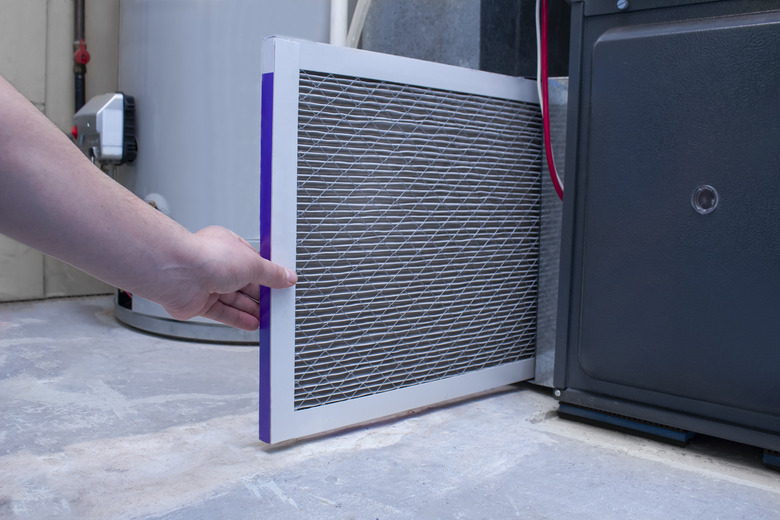How To Clean A Washable Furnace Filter
It's so easy to ignore your furnace filter. All you know is that the heat and air conditioning are kicking on and off, and you're staying warm or cool. So everything's good — right? Well, possibly not. Every part of your system is there for a reason, and that includes the filter, which needs attention from time to time just as the other parts do. There's really nothing to cleaning a washable furnace filter if that's the type you have, so be smart and put it on your to-do list.
What Purpose Does a Furnace Filter Serve?
What Purpose Does a Furnace Filter Serve?
The job of a furnace filter is to remove airborne particles and dust from the air that circulates through your HVAC system. The air pulled into return vents and through the ductwork back into the system needs to be filtered to keep not just the workings of your furnace but the air in your home clean. A dirty filter affects your energy cost, the performance of your HVAC system, and your comfort.
Washable electrostatic furnace filters made of multiple layers of woven polypropylene are a one-time investment that does away with the need to repeatedly buy disposable filters. It's tempting to put off checking for a dirty filter when replacing it means running out to buy a new one, whereas it's convenient to stay home and simply wash the permanent filter you have. You'll be more likely to check it regularly, which will be good for your furnace and good for your health.
How To Wash Your Furnace Filter
How To Wash Your Furnace Filter
It doesn't take unique skills, special chemicals, tools, or equipment to clean your washable filter — only water.
1. Turn Off the System
Running your HVAC unit without a filter installed to catch debris and dust that can harm the system is a bad idea, so make sure your furnace is turned off before you remove the filter. Simply switch the mode on your thermostat from "heat" or "cool" to the "off" position.
2. Remove the Filter
If your furnace installer didn't show you where your filter is located, check the paperwork from the manufacturer or call the heating and cooling business you worked with to ask where to find it. If you have a horizontal HVAC unit, the filter will be located on the intake side. A vertical HVAC unit with upward air movement will house its filter in a door at the bottom, requiring access by opening a top and bottom door. In a vertical unit with downward air movement, there are usually two filters found in a top door. Once you locate your air filter housing, simply lift it out.
3. Wash and Rinse the Filter
You can wash your filter with clean water at a sink or in the bathtub, but being able to spray it with a detachable showerhead or with your garden hose out in the yard is much easier. One side of the filter will show buildup of debris, so aim the spray of water into the opposite side, hitting the debris from behind. Otherwise, you'll be washing it into the interior of the filter. If you think there may be smoke or grease residue in the filter, add some grease-cutting dish soap or a mild household spray cleaner to each side, wipe with a soft cloth, and rinse until no more soap is showing.
4. Dry the Filter
Shake water from the filter and then prop it on one corner for several minutes to allow drainage of excess water. Return it to its housing in the HVAC unit, being sure that the arrows on the filter are pointing toward the furnace. Switch the mode back to "heat" or "cool" on your thermostat. The airflow of the operating unit will complete the drying process.
When to Wash Your Filter
When to Wash Your Filter
Your filter's product literature will include information regarding when you should clean your filter. Generally, the thinner the filter, the more frequently it will need cleaning. Thicker filters contain more woven material to hold airborne particles and need attention less often.
Also affecting how often you clean your filter are the number of occupants in your home, whether you have pets that shed dander and fur, whether you have allergies, the quality of your indoor air, and how much you use your heating and cooling system.
Regardless of the suggestions from the manufacturer, checking your filter once a month is a good idea, so mark it on your calendar.
